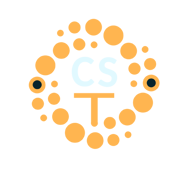Download my Free Theory Synopsis
Offering a simple summary of the Cell Suppression Theory and how it can benefit you

Theory SYNOPSIS
Free download

Enter your details here to download
The Cell Suppression Theory at a glance
Photo by Ameen Fahmy on Unsplash


My lightbulb moment...
...the Warburg effect reinterpreted
The Warburg effect, a key hallmark of cancer, refers to cancer cells ditching the primary energy pathway (OXPHOS) to use a less efficient energy pathway (glycolysis) when it is abnormal to do so. While traditionally attributed to a damaged OXPHOS pathway, this explanation is increasingly questioned as many cancer cells appear to use this OXPHOS pathway. The Warburg effect is key to identifying the root cause of cancer because it is a key feature of all solid cancers. This is a key consistency that defines the disease.
"We still don't know the reason for the Warburg effect. If I had two billion dollars I would give it to 20 biochemists, give them £100 million each and tell them - go to it."
With this in mind, I uncovered a major breakthrough when I discovered that invasive pathogens can also trigger the Warburg effect in host cells as part of an immune response. This suggested that the Warburg effect in cancer may not stem from cell malfunction, but rather from a suppression-based mechanism induced by intracellular infection.
When I uncovered that this insight aligns with research by Ravid Straussman, showing that intracellular pathogens are present in all tumour samples tested. I realised I was on to something. Unlike mainstream theories that blame damage to cell machinery, the Cell Suppression Theory proposes that cancer is actively driven by ongoing intracellular infection, which hijacks and reprograms cellular metabolism to support the pathogen’s survival - potentially explaining the Warburg effect and the disease itself.
James Watson
co-discoverer of the structure of DNA
Cell Suppression
vs
Cell Malfunction
The Cell Suppression Theory (CST) offers a radically different view of cancer, proposing that intracellular pathogens - play a central role in initiating and sustaining the disease. Rather than seeing cancer as a result of random cellular malfunction or DNA damage, CST suggests that these pathogens suppress normal cell defences and hijack cellular functions for their own survival. That this is an opportunistic infection that requires chronic inflammation (damage to the cellular terrain) to enable successful intracellular colonisation.
This reframes cancer not as a disease of cell malfunction, but as a parasitic infection in which the cell's unusual behaviour reflects the pathogen's control - a disease of cell suppression. Through this interaction cell death mechanisms are suppressed as are immune responses to aid with pathogen survival. Stuck between a process of infection control (Warburg metabolism) and cell repair (proliferative metabolism), a tumour forms as the cell's capacity to commit cell death has been suspended or suppressed.
These pathogens may be the real trigger behind both the symptoms of cancer and the secondary DNA damage observed. As such, targeting the pathogen, rather than the cell itself, may open new and more effective treatment strategies.
*It's important to note that while this implies that cancer can be treated simply by administering particular antibiotics, adopting such an approach without guidance can be dangerous for a number of reasons. Some antibiotics have been shown to increase cancer progression - so it is critical to understand the nuances involved. This detail is explored within my book.
A Paradigm Shift:


Page 185 - THE CANCER RESOLUTION?
A Comprehensive Explanation of Cancer
INFECTION > SUPPRESSION
Carcinogenesis
Initiation - Promotion & Progression
This graphic, taken from my book, summarises the first complete explanation of carcinogenesis as it pertains to the successful invasion of a cell by an intracellular pathogen. This interaction can account for the entire process of cancer development from its initiation, right through to its promotion and progression, indicating that a sustained infection, due to a common type of human pathogen, appears to be the underlying cause of cancer.
At each stage, the graphic summarises how an intracellular infection triggers and mediates all of the key hallmarks of the disease.


"Mark has presented a coherent model of carcinogenesis and the mechanism of cancer.”
Professor Michael Lisanti - MD-PhD FRSA FRSB FRSC
'Cancer Through Another Lens', February 2023
Page 300 - THE CANCER RESOLUTION?
Cancer's Hallmarks Explained
Cancer's Foundational Characteristics
At present, no mainstream cancer theory can explain all 10 hallmarks, suggesting that the underlying mechanism(s) driving the disease have not yet been identified. This may go some way to explaining why no cure has been forthcoming


Cell 2011
There are currently 10 accepted hallmarks of cancer - shown within the graphic below. These are known characteristics that define the disease. Studying these hallmarks enables scientists to inhibit key aspects of cancer through the creation of novel treatments related to each hallmark - also shown within the graphic.
Hallmarks: the next generation
The revolutionary Cell Suppression Theory provides hope, because it is the first cancer theory to offer a comprehensive and coherent explanation of all 10 Hanahan and Weinberg Hallmarks. A remarkable achievement.
Not content with just 10, the CST identifies 20 additional features associated with cancer that largely remain unexplained, and provides a comprehensive explanation for all 20, unquestionably establishing the CST as the most accurate and comprehensive cancer theory currently available.
A Game-changing Breakthrough?
These hallmarks have another crucial purpose, they can be used to assess the accuracy of any cancer theory providing an indication as to whether the treatment associated with any given theory has greater potential to treat the disease - a theory capable of explaining all 10 has likely identified a key mechanism driving cancer if not the underlying mechanism responsible - this means the treatment approach associated with such a theory will likely be effective based on the potential premise that the underlying driving mechanism is being targeted.
The Current Stalemate
Fungi & Bacteria in tumours Overturning medical Dogma
The Micro-organisms at the Heart of Cancer
For this new Cell Suppression Theory to have any shred of validity, we would expect to find influential pathogens present within all tumours, if indeed they are driving cancerous conditions. Up until recently, tumours were assumed to be sterile – free of micro-organisms and their influence.
But in a remarkable turn of events, the pioneering work of Ravid Straussman and colleagues, has recently uncovered that all tumours tested so far, harbour distinct populations of bacteria and fungi, otherwise known as the 'Tumour-associated microbiome'. Crucially, their presence appears to promote cancer progression:
"Collectively, our data reveal that the distribution of the microbiota within a tumour is not random; instead, it is highly organized in microniches with immune and epithelial cell functions that promote cancer progression." - Nature 2022
Fungi, a New Hallmark of cancer?
Regarding the influence of fungi in particular, Ravid Straussman states:
"It's possible," Straussman said, "that fungi are somehow aiding the tumour to form or grow. Bits of data here or there showed that fungi correlated with the worst or bad prognosis."
- Stat news 2023
Crucially, none of the established cancer theories appear to take into account the influence of these micro-organisms, certainly not through the lens of cell suppression as proposed by the CST. This means that current mainstream treatments – which are developed from the concepts put forward by each theory – are not targeting the pathogens that appear to have a direct influence. Could this oversight explain why we are struggling to effectively treat cancer?
"Lastly, we found that fungal DNA within the plasma of individuals could be used to discriminate between healthy individuals and cancer patients."
Ravid Straussman
© Copyright Mark Lintern 2023. All rights reserved. Established: June 2023




















